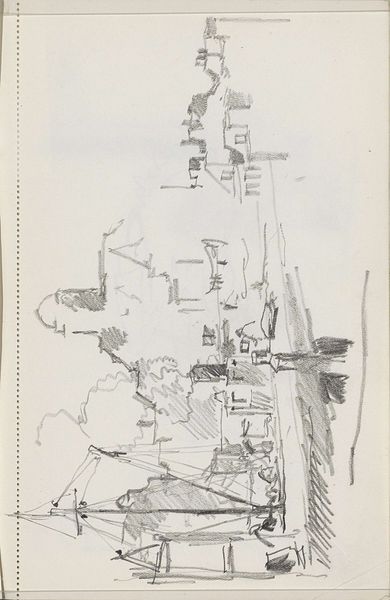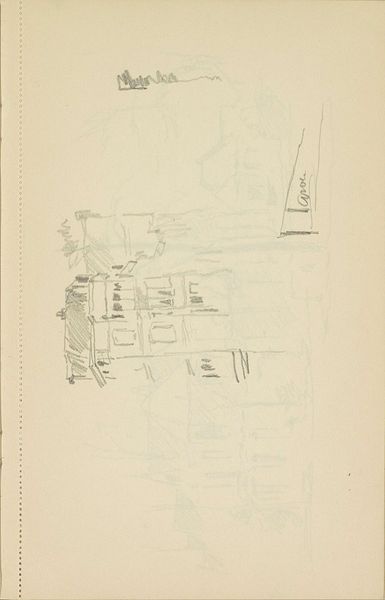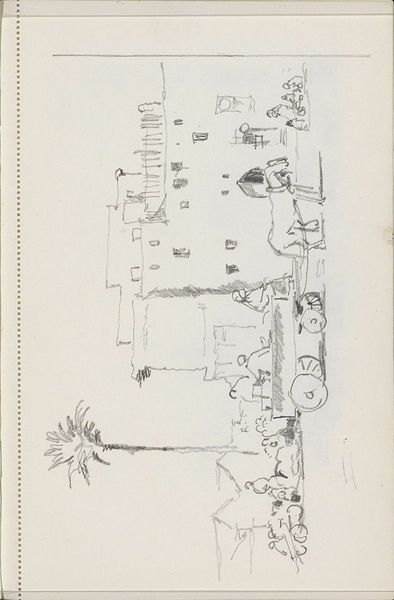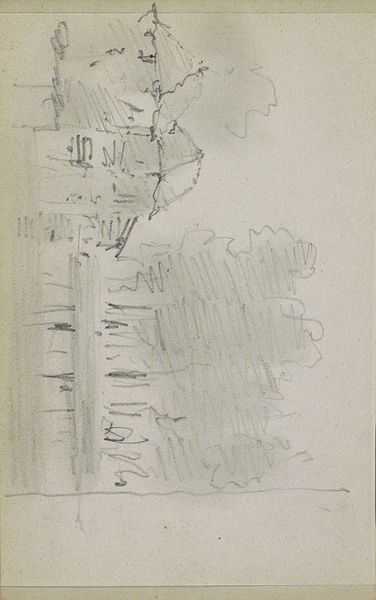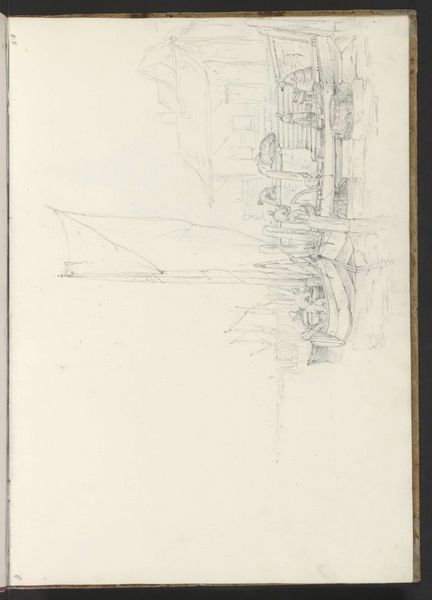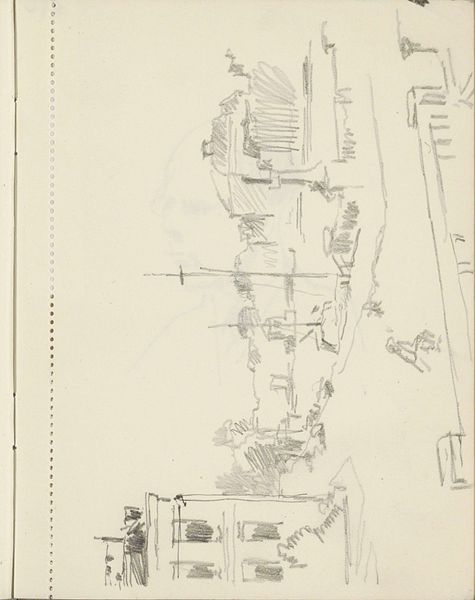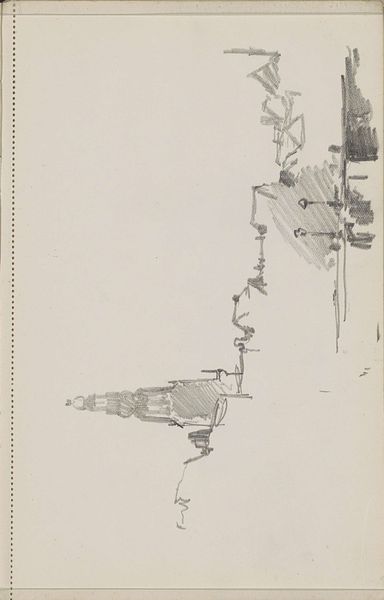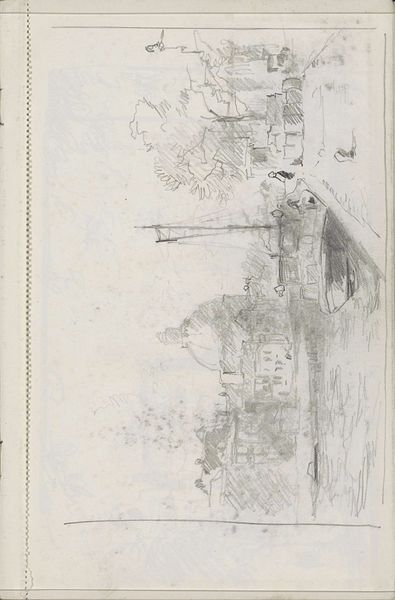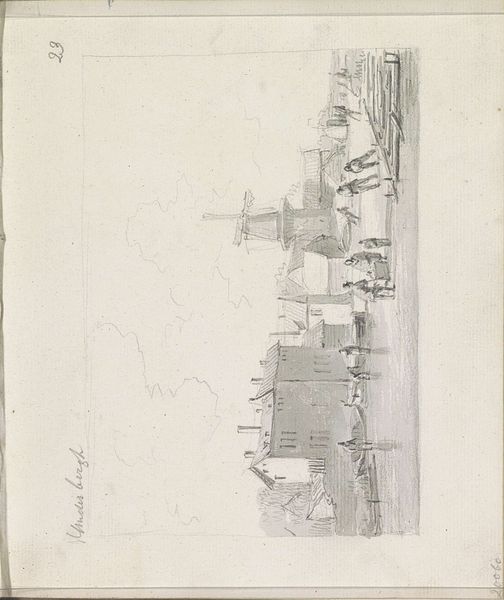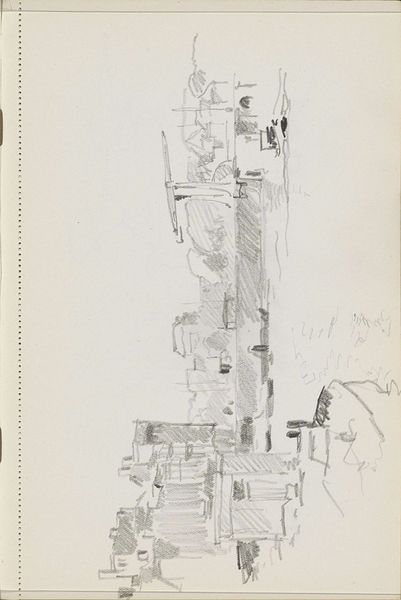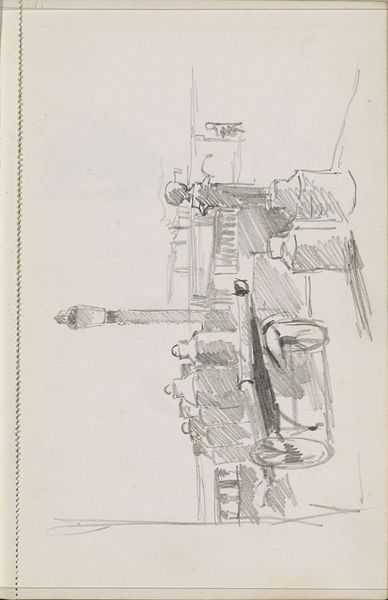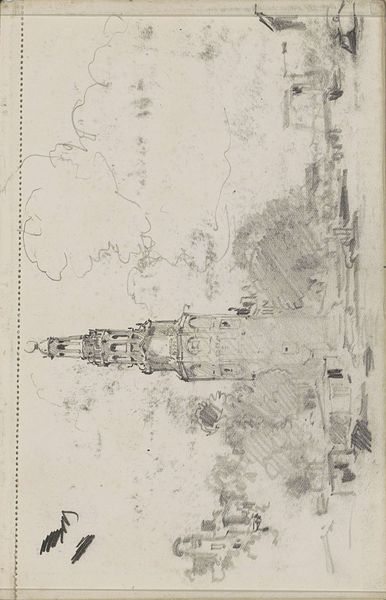
drawing, pencil, graphite
#
drawing
#
pencil
#
orientalism
#
graphite
#
cityscape
#
realism
Copyright: Rijks Museum: Open Domain
Editor: This drawing by Cornelis Vreedenburgh, dating back to 1936, is called "Figuren op een straat met een moskee" and it's made with graphite and pencil. The architecture gives a strong sense of place, almost like a memory sketched on paper. How do you see the piece? Curator: What strikes me is the deliberate choice of materials, particularly the graphite and pencil. These aren't expensive media, suggesting a certain accessibility, perhaps even urgency in capturing the scene. Given Vreedenburgh's focus on cityscapes, it raises questions about his engagement with the urban environment and the means available to represent it. Editor: So you're saying the drawing's value lies not just in the subject, but in the very act of making it, using accessible materials? Curator: Precisely. And in the Orientalist style which carries its own context. How does this style contribute to or perhaps even challenge our understanding of labor, materiality, and consumption related to art production and the depiction of this Middle Eastern scene? Consider who this work was for, what type of buyer it catered to. Editor: That's a fascinating way to look at it – thinking about who this artwork was made for. So instead of only focusing on what's *in* the picture, we're thinking about *how* and *why* it was created, and the resources that were accessible for it. Curator: Absolutely. This drawing allows us to examine not just the image of a city street, but also the artist's process, the availability of materials, and the social and economic context that enabled its creation. Editor: This definitely opens up a different perspective for me when looking at sketches. It's not just about the final image, but also the story of its production. Curator: Exactly. And understanding that expands our appreciation.
Comments
No comments
Be the first to comment and join the conversation on the ultimate creative platform.
